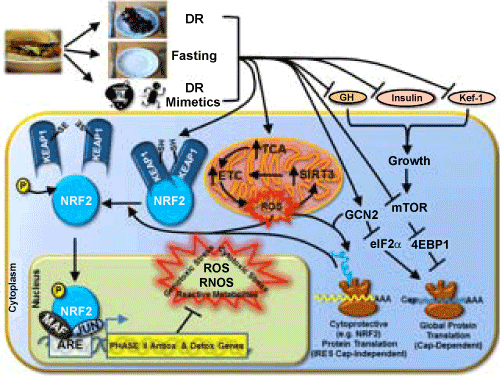
 |
| Figure 3: DR and DR Mimetics Activate NRF2 Reduced food intake (DR), fasting or the use of DR mimetics stimulate a variety of cellular and endocrine responses that ultimately lead to NRF2 activation and the transcription of Phase II Antioxidant and Detoxification genes. Inside of the cell, growth-promoting signals are suppressed along with cap-dependent translation of mRNA into protein by inhibition of mTOR and eIF2α, while IRES cap-independent translation of NRF2 is stimulated. Mitochondrial oxidation of fatty acids is increased, which results in small amounts of ROS production. This ROS and/or Phase I metabolized DR mimetics (xenobiotics) enables for the oxidation of cysteine residues on KEAP1 and subsequent release and activation of NRF2. |